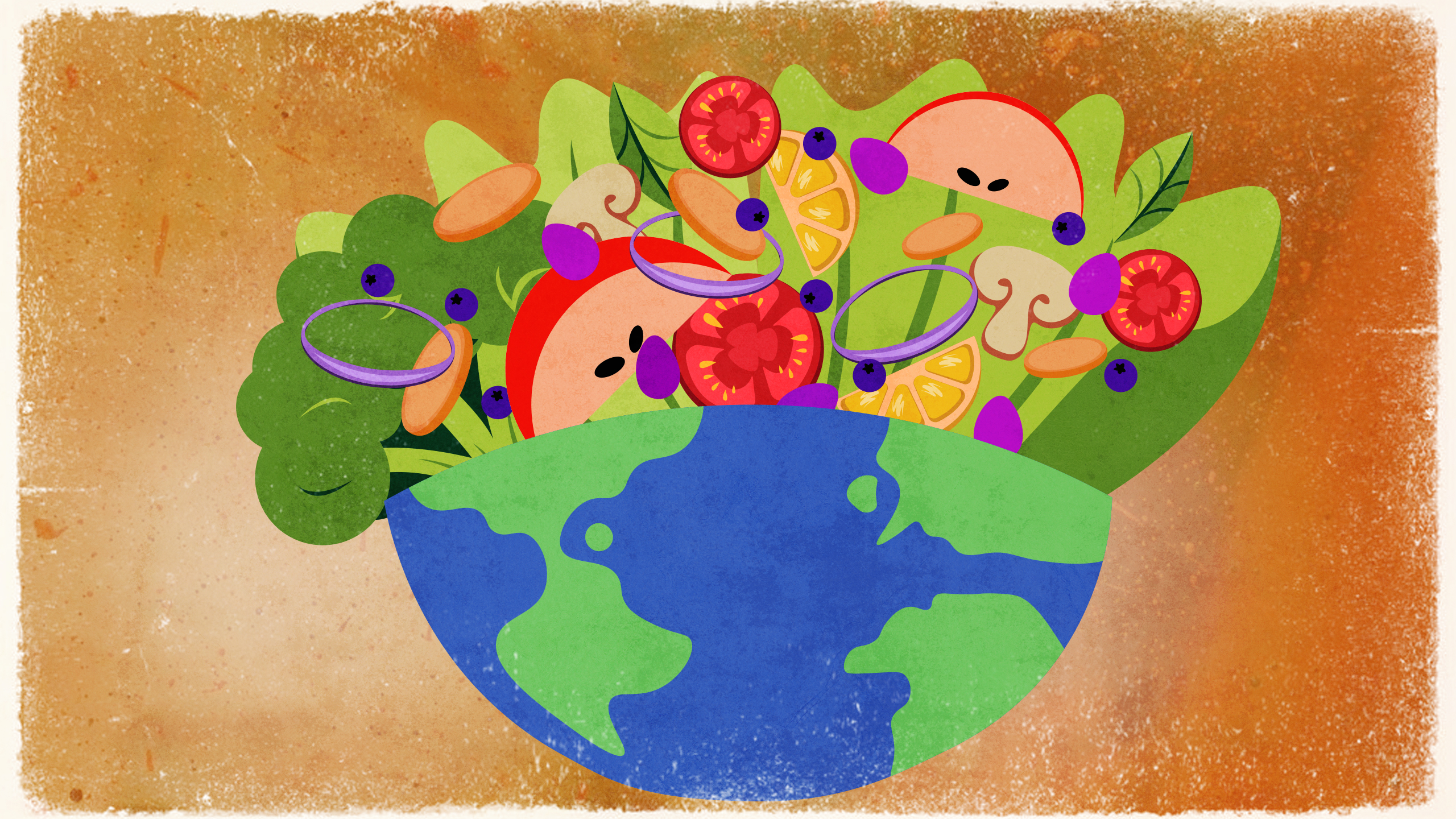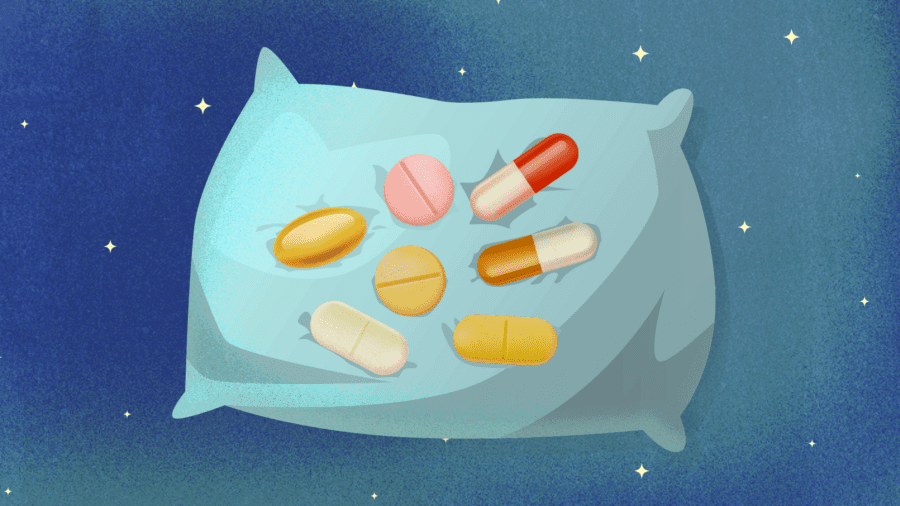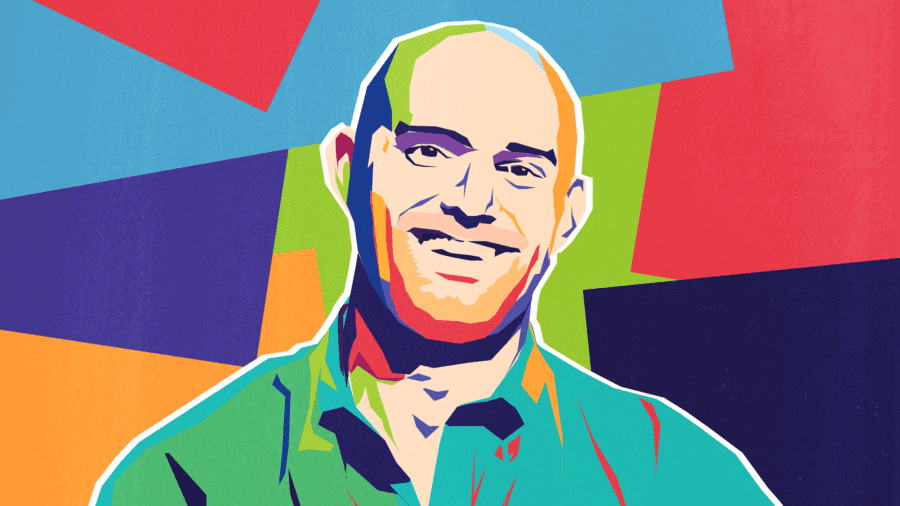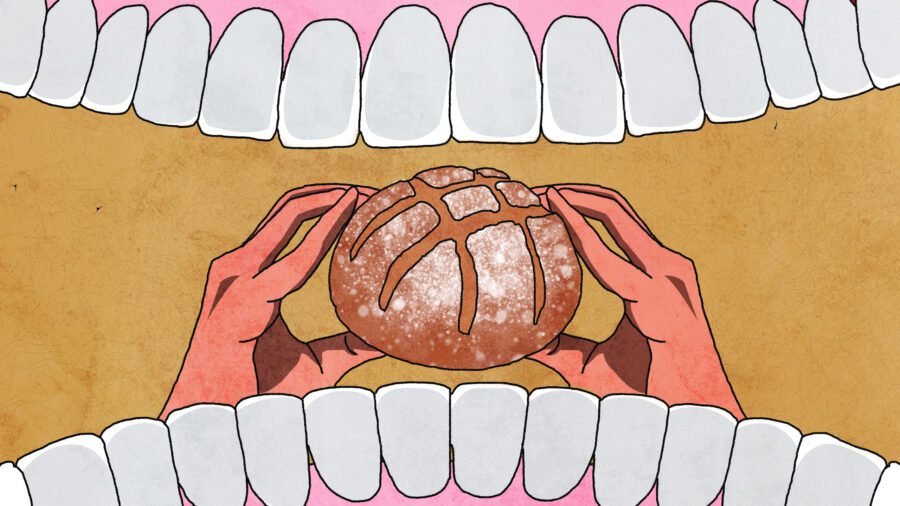
The Impact of Plant-Based Eating for Your Body and the World
Admit it: if you’re a meat eater, you probably roll your eyes when you hear the word vegetarian or vegan and think to yourself: No meat? No, thank you!
People think that a vegan diet means you’ll be eating nothing but salad for every meal. Odds are, when you see the term plant-based diet, your mind goes right to thinking it means cutting out meat altogether. But you may not be aware that there are many differences between the two. Plant-based diets are more than just eating plants alone, and you might be surprised to learn that vegetarian diets can be, too.
First off, there are a few different types of vegetarians with their own spins on what they can eat:
- Lacto-vegetarian diets exclude meat, fish, poultry, and eggs, as well as foods that contain them. Dairy products, such as milk, cheese, yogurt, and butter, can be part of the diet, though.
- Ovo-vegetarian diets exclude meat, poultry, seafood, and dairy products but allow eggs.
- Lacto-Ovo vegetarian diets exclude meat, fish, and poultry but allow dairy products and eggs.
- Pescatarian diets exclude meat, poultry, dairy, and eggs but allow fish.
- Vegan diets exclude meat, poultry, fish, eggs, and dairy products — and foods that contain these products. This is what most people think of when discussing vegetarianism.
As we can see, vegetarianism still offers some options that mean you’re not going to spend a night out at a restaurant making trips to the salad bar. But even with the different options of vegetarian diets, if it’s too restrictive for you, an even more lenient plant-based diet might be a better option.
Plant-Based vs. Vegetarian Diets
Vegetarian diets have two rigid restrictions: No meat and no poultry. The different versions of vegetarianism will make allowances for eating fish or dairy, depending on how strict you aim to be. The more stringent vegetarianism you follow, the more restrictive your diet can be.
A plant-based diet is quite different, though, as it focuses on plant-based foods being the center of what you eat. It’s based not only on fruits and vegetables but things like nuts, seeds, grains, beans, and more. On top of that, you can have meat, poultry, fish, and dairy in this diet, but in smaller percentages than plant-based products. It also looks at reducing or cutting out refined sugars, fried foods, and processed meats.
Where somebody trying to transition into a vegetarian diet might feel overwhelmed by cutting meat and poultry out, a plant-based diet can be an easier adjustment.
You can still have ground beef or turkey in your chili, but in smaller amounts, with a greater portion of beans added to your recipe. If you crave steak or chicken breast, go for it! Just have a six-ounce piece instead of a big slab, and add some extra veggies on the side to fill yourself up.
The Personal Benefits of Going Plant-Based
It’s long been established that eating less meat and more vegetables is healthier for you. But you may not know some of the reasons why embracing a more plant-based diet is better for you. When you were a kid, and your mother said to eat your veggies because they’re good for you, you probably responded by asking: Why? And your mother might have replied with the standard parental answer of: Because I said so!
Well, we’re not kids anymore, which means that “because I said so” isn’t a good enough reason for eating more vegetables. In order to better understand a plant-based diet, you need to understand how more plants and less meat are a great combination. Knowing what kinds of meat you should avoid and how much you should be eating is far more important than cutting it out entirely.
Fatty cuts of meat or, worst of all, meats like sausage and bacon that are high in saturated fats can negatively impact our health by raising cholesterol and clogging arteries. Eating lots of these meats can also diminish heart health by causing high blood pressure and hypertension. Even “healthier” alternatives like turkey bacon or turkey sausage aren’t any better for you because of their salt content!
On the other hand, a plant-based diet can reduce the risk of developing cardiovascular disease by almost 16%. Plant-based diets also help reduce the chance of diabetes, as they avoid refined sugars found in many processed foods we tend to grab out of convenience. Furthermore, cutting out these high-fat meats and substituting them with plant-based alternatives can make for a healthier overall diet.
Eating more whole foods can help with weight loss as well due to the higher amounts of fiber and antioxidants they contain. Whole foods consist of nuts, seeds, avocados, tofu, and more — many times, they are commonly referred to as superfoods. These whole foods digest more slowly, leaving you with a greater sense of feeling full and reducing the desire to overeat, further reducing the risk of diabetes.
The weight loss that comes with a plant-based diet also contributes to reducing the chances of cancer. While changing to a healthier, plant-based diet has only been shown to lower the risk of cancer by around 10% on its own, and the weight loss it promotes increases those benefits.
Join In 200 Million+ On The Journey to Greatness
Getting Started on a Plant-Based Diet
Transitioning to a plant-based diet is much easier than going 100% vegan or vegetarian. Because meat, poultry, and dairy are still a part of the diet, you won’t feel as though you’re giving up a lot of what you might regularly eat.
Vegetarian diets also don’t cut out processed foods the way a plant-based one does. You could eat cookies that have high refined sugar content or french fries and still be vegan, as unbelievable as that sounds. Much like any diet plan, you still need to make healthy eating decisions to gain the most benefit.
You can begin with minimal adjustments to get started on a plant-based diet meal plan. Dedicating one day of the week to cut out meat from your meal choices is a great way to start. Instead of feeling like you’ve made a drastic change, you’ll feel as if you’re enjoying six cheat days!
The next step is to adjust your plate portions to reduce how much meat you’re eating. Where you might have a meal of a 10-ounce steak with veggies on the side, you could prepare a stir fry with half that portion of meat spread throughout. You could also add some strips of steak or chicken on top of a salad to have more vegetables without giving up meat completely. Adjustments like these can help reset your palate and eases the transition to plant-based proteins such as tofu or beans.
A big challenge of plant-based eating for beginners can be when it comes to dining out. Fortunately, more restaurants offer vegetarian options to accommodate people following those diets. Check the restaurant’s menu before a night out to see what options they have for you to choose from.
One more thing that can be a hurdle in going plant-based can be feeling satisfied and full after eating. You can counter this by using more whole grains, legumes, or beans as a way to bulk up the size of your meal. Snacking on healthy, protein-rich things such as walnuts or yogurt can also help you feel full throughout the day without being tempted to eat things like chips or sweets.
How Does a Plant-Based Diet Help the Environment?
A plant-based diet has obvious benefits for your health, but it has great environmental benefits, too. A report published in The Lancet in 2019 found that shifting towards plant foods and away from animal products is vital for the health of our planet. The report shows that vegan and vegetarian diets were associated with reductions in greenhouse gas emissions.
A report from the United Nations Environment Programme found that both meat and dairy animal products require more resources and cause higher emissions than plant-based alternatives. Another study reports that 57% of global greenhouse gas emissions from food production come from the meat and dairy industries. Beef has the most global greenhouse gas emissions, according to the study.
Shifting to a plant-based diet also promotes greater sustainability, creating a better balance in how we impact the environment. The production of plant and whole foods has significantly fewer adverse effects on the world than the meat and dairy industries. Where over half of global greenhouse gas emissions are generated by them, just 29% of food-related global greenhouse gas emissions come from plant-based foods.
According to studies, a global shift to a plant-based diet could reduce greenhouse gasses caused by food production by 70% by 2050. According to one climate change calculator, eating 75 grams of beef—the equivalent of a fast food burger — every day for a year contributes to greenhouse gas emissions equal to driving a car 7,196 miles. Compare that to eating 150 grams of beans — roughly a third of a can — at the same rate is equivalent to driving a car only 93 miles.
Change Your Diet, Change the World
Embracing a plant-based diet begins with incremental changes that can have a great impact on your health, as well as the planet’s. You can still enjoy many of the foods you love while reducing your intake of them easily.
We want to help you make these changes at Greatness and have some resources you can use to do it. Dr. Steven Gundry tells you about the foods you should eliminate from your diet here. Sten Ekberg discusses some top foods to start eating right away here.
We also share some great meals that you can add to your menu in How to Age in Reverse by Eating These Plant-Based Meals, and you can read our article Sugar Detoxing with Superfoods to help cut out refined sugars while shifting to a plant-based diet. Make your diet healthier and help yourself feel great!
Greatness Authors
Greatness Authors is a collection of writers, thinkers, curiosity experts, and students of the world who are committed to bringing you the most up-to-date, impactful, and inspiring information surrounding Greatness topics.

Do You Have to Be a Morning Person to Be Successful? Here’s What Both Sides Have to Say

9 Reasons You’re Tired All the Time & How to 10x Your Energy

How to Have a Healthy Romantic Relationship Even if You Share Different Beliefs

The 7 Best Vitamins to Naturally Promote Better, Uninterrupted Sleep According to Shawn Stevenson

The Science of Forming Healthy Habits & Letting Go of Bad Ones, According to Author James Clear










